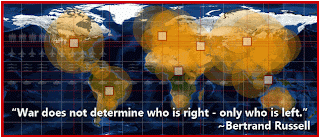GLOBAL
FIREPOWER
PWINDX
is an acronym for Power Index and refers to an country’s ability to have
superior firepower over the rest of the world.
PWINDX was developed by the CIA and is used by the US
to
anticipate any current or future military threats to national security.
What
the reader (chart below) should find most curious is the fact that by 2030 the US will rank
second to China and 2050 will rank 3rd behind China and India.
However,
a lot can happen in 37 years…
And,
with a very sluggish economy, our current wealth disparity, our current debt
load, and an infrastructure that is badly in need of a face lift, I would
suspect that Americans will be gradually experiencing a dramatic change in
lifestyle.
Most
Powerful Nations at Given Years
The following is a
list of the five most powerful nations at a specific year according to the Atlantic
Council and the International Futures model.
|
R
A
N
k
|
2
0
1
0
|
2
0
2
0
|
2
0
3
0
|
2
0
4
0
|
2
0
5
0
|
2
0
6
0
|
|
1
|
||||||
|
2
|
||||||
|
3
|
||||||
|
4
|
||||||
|
5
|
Firepower is the military capability to direct
force at an enemy. It is not to be confused with the concept of rate of
fire, which describes cycling of the firing mechanism in a weapon
system. It involves the whole range of potential weapons. The
concept is taught as one of the key principles of modern
warfare wherein the enemy forces are destroyed or have their will to
fight negated by sufficient and preferably overwhelming use of force as a
result of combat operations.
Through the ages firepower has come to mean
offensive power applied from a distance, thus a ranged
weapon, as there is an immediate dissonance with the thought of
one-on-one close quarters combat.
Firepower is
thus something employed to keep enemy forces at a range where they can be defeated
in detail or sapped of the will to continue. For naval
artillery, the weight of a broadside was
long used as a figure of merit of a warship's
firepower.
Eventually, the feared Huns employed the composite bow and light cavalry tactics to shower arrows on the enemy forces, a tactic that also appeared in a less mobile form in Britain, with its famed longbowmen, used during the various Anglo-French conflicts collectively known as the Hundred Years' War during the Middle Ages.
The Battle of Crécy is often thought of as the beginning of the "age of firepower" in the west, where missile weapons enabled a small force to defeat a numerically superior enemy without the need for single combat.



No comments:
Post a Comment